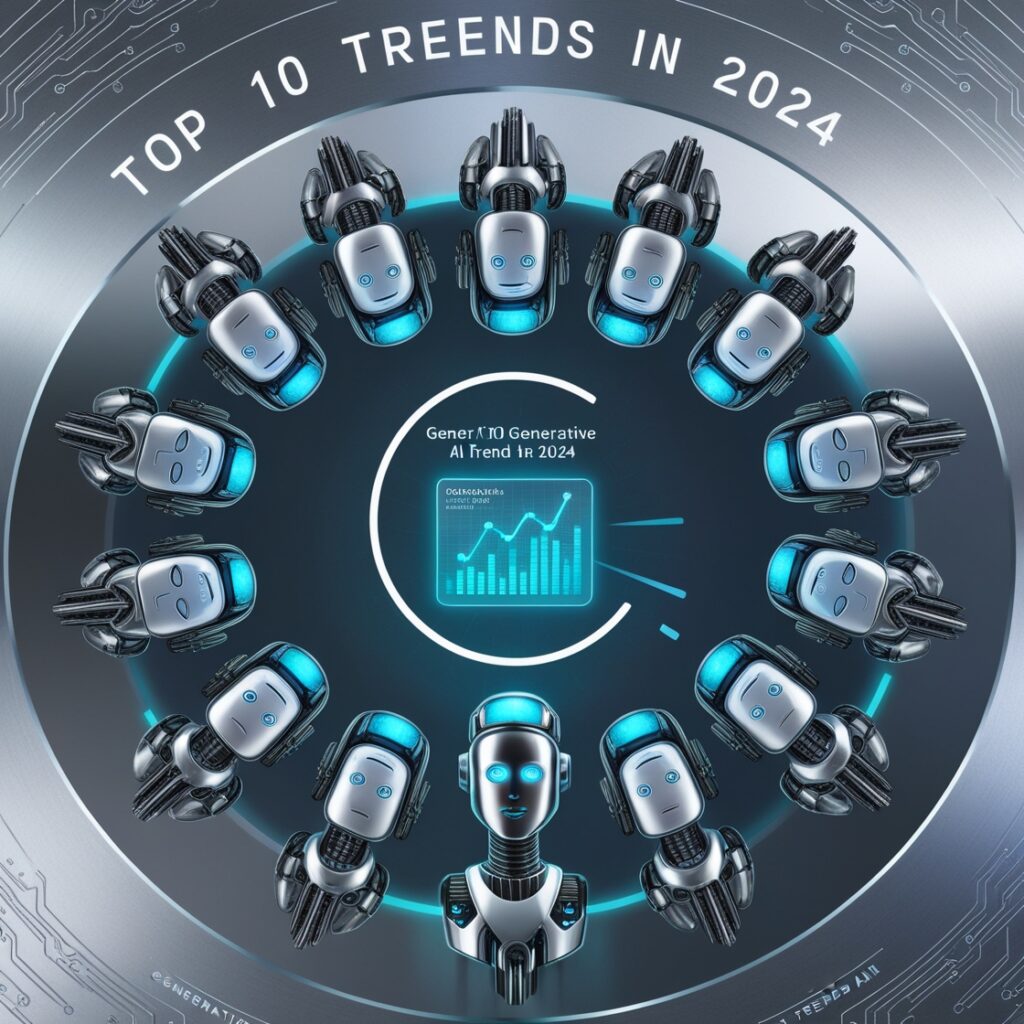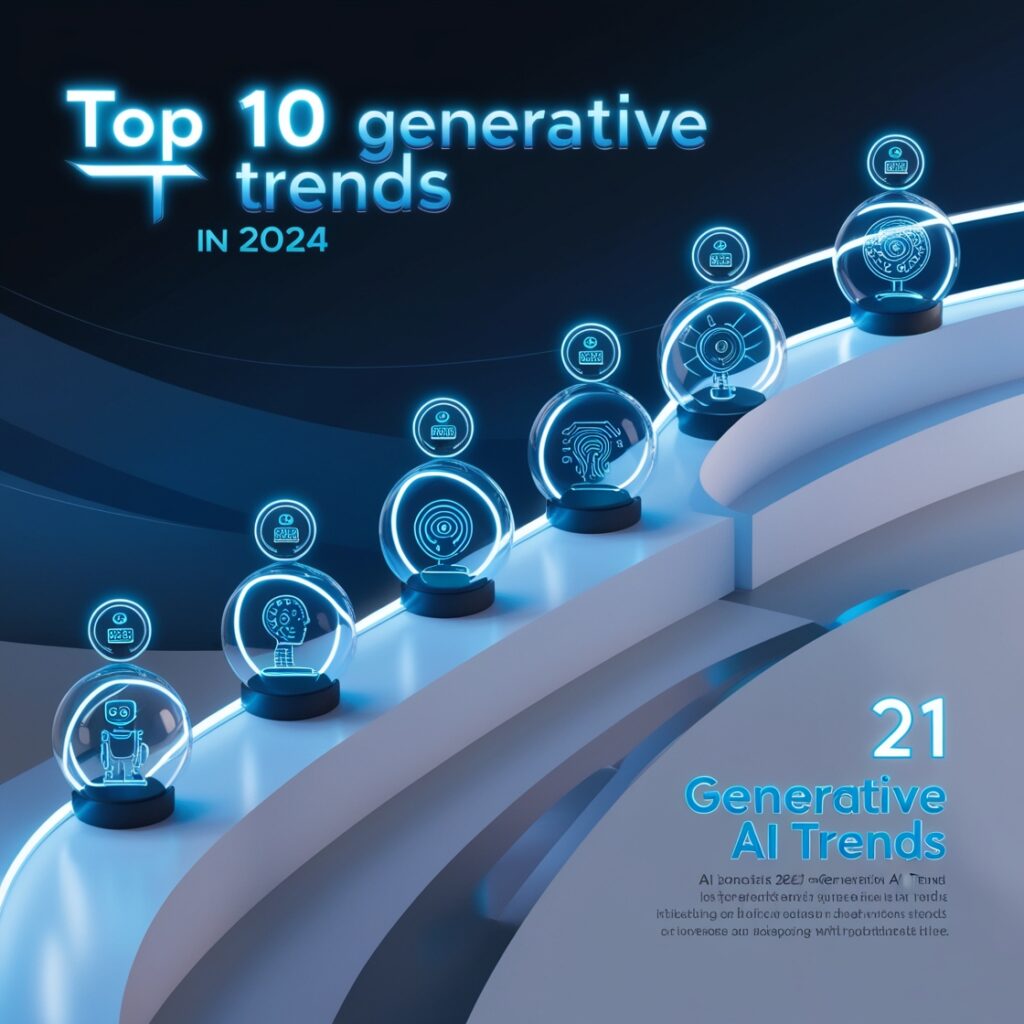1. Bigger and More Powerful Models
Generative AI models are becoming increasingly larger and more powerful. For example, GPT-4 was trained on over one trillion parameters, while other models like Google’s PaLM2 and DeepMind’s Gopher used hundreds of billions of parameters. The top 10 Generative AI trends for 2024 Rumors suggest GPT-5 could be released soon, representing another major leap in scale. Increasing dataset size has been the most reliable way to create improvements in these large language models (LLMs) so far.
2. Multimodal Generative AI
The ambition of Generative AI is rapidly expanding beyond single-domain performance to embrace multimodal models that can process and interpret multiple types of data. Advancements are aiming to develop more versatile models capable of seamlessly transitioning between tasks like natural language processing (NLP), computer vision, and even video processing. Proprietary models like OpenAI’s GPT-4V and open-source options like LLaVa are part of this new wave that will create more intuitive and flexible applications.
3. Open Source AI
Open source AI is becoming more prominent, with GitHub data showing a remarkable increase in developer engagement, particularly with generative AI projects like Stable Diffusion and AutoGPT. While early open source models lagged behind proprietary options, the landscape broadened in 2023 to include powerful contenders like Meta’s Llama 2 and Mistral AI’s Mixtral models. This democratizes access to sophisticated AI tools and encourages transparency, but also raises concerns about misuse for disinformation
4. Generative Design
Generative AI is being rapidly adopted in the design of physical products and services. Generative design tools allow designers to input requirements and materials, then automatically generate prototypes and blueprints as digital twins for testing. Design platforms like Autodesk are incorporating this functionality to help designers rapidly iterate and optimize product designs.
5. Generative Video
Video content creation is becoming more accessible with the rise of generative video tools. These AI-powered tools can produce professional-looking video content at a fraction of the cost compared to hiring human professionals. The robotic qualities in AI-generated speech are also improving to become more natural and human-like.
6. Generative Audio and Speech
AI-generated audio and speech are becoming more ubiquitous, with tools getting better at simulating the tones and inflections of human speech. The subtle robotic qualities that were previously detectable are starting to disappear. This will enable more natural interactions with AI systems.
7. Personalized Interactions and Experiences
Generative AI is enabling more personalized interactions and experiences to drive heightened engagement. Models are starting to understand human psychology and creative processes better to connect with users on a deeper level. AI-adapted content tailored to individual preferences is improving user interactions.
8. Intuitive Human-AI Collaboration
Generative AI is enabling more intuitive interfaces for seamless collaboration between humans and AI. This includes the development of AI assistants that can autonomously undertake complex tasks in fields like research and creative brainstorming. AI-powered writing assistants are also automating many tasks.
9. Ethical and Responsible AI
As generative AI matures, there is a growing focus on ensuring it is developed and deployed responsibly and ethically. Organizations are confronting limitations like output quality, security concerns, and integration challenges as they move from experimentation to real-world adoption. Setting realistic expectations, tying AI projects to clear business goals, and measuring outcomes will be key.
10. Generative AI for Creativity and Art
Generative AI is shaping diverse art forms and cultural expressions. Models are blurring the boundaries between natural and synthetic visuals, transforming design. AI is empowering artists and musicians with tools to prototype and create in new ways. The entertainment and virtual reality industries are seeing higher adoption of generative AI for content creation.
Conclusion
In conclusion, generative AI is rapidly evolving with powerful new models, multimodal capabilities, open source democratization, and innovative applications across design, video, audio, personalization, collaboration, and creativity. However, the focus is shifting to responsible development and real-world enterprise adoption in 2024. Organizations will need to navigate the reality check of implementation challenges and set realistic expectations to harness the full potential of this transformative technology.

Generative AI



